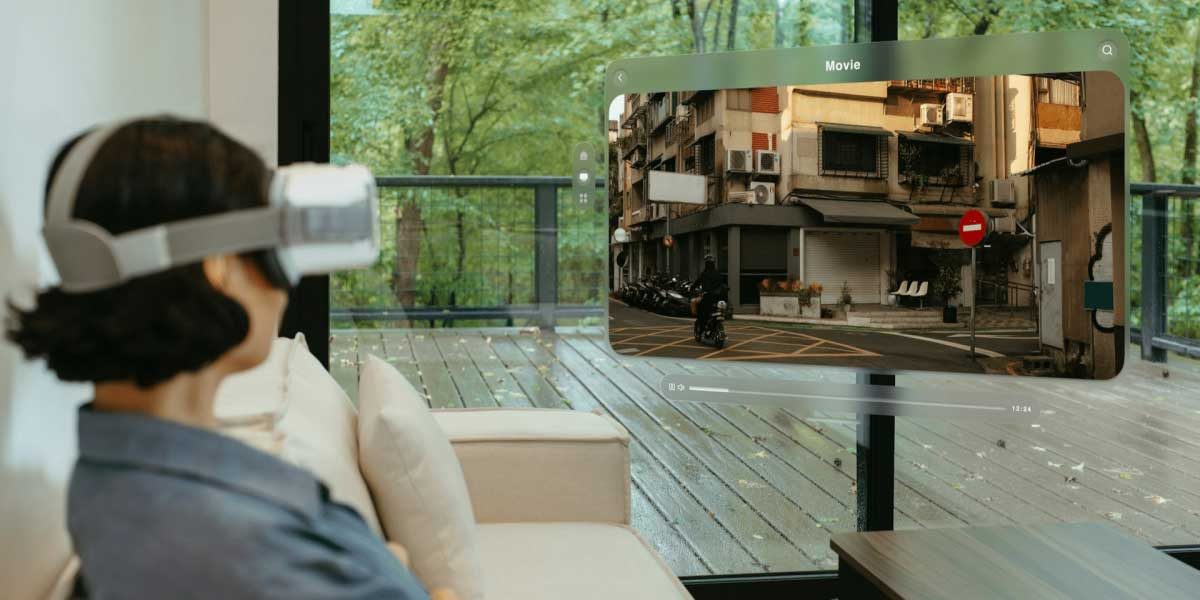Augmented Reality (AR) has been making significant strides in various industries, and home entertainment is no exception. As technology continues to evolve, AR is poised to revolutionize the way we consume and interact with media in our homes. This article explores why AR is the future of home entertainment, focusing on its immersive experiences, interactive content, enhanced social engagement, and potential for innovation.
Read also: How Young Should Children Learn About Entrepreneurship?
Immersive Experiences with AR
AR technology enhances the traditional viewing experience by overlaying digital content onto the real world. This creates a more immersive experience, allowing users to feel as if they are part of the action. For example, AR can project characters and scenes from a movie into your living room, making the viewing experience more engaging and exciting.
One of the key features of AR is its ability to provide real-time interaction. Unlike traditional media, which is passive, AR allows users to interact with the content they are consuming. This can include anything from manipulating 3D models to participating in virtual environments that respond to the user’s movements and actions.
Interactive Content
AR is set to revolutionize the gaming industry by providing highly interactive and immersive experiences. Games that utilize AR can turn any space into a gaming environment, allowing players to interact with digital objects as if they were real. This level of immersion and interaction is a significant leap forward from traditional gaming.
AR is also transforming educational content in home entertainment. Educational AR applications can bring subjects to life by overlaying information, animations, and interactive elements onto the real world. This makes learning more engaging and effective, especially for children, who can benefit from visual and hands-on experiences.
Enhanced Social Engagement
AR enables shared experiences that are more interactive and engaging than traditional media. For instance, family members can participate in AR games or watch AR-enhanced movies together, creating a more social and collaborative environment. This can strengthen family bonds and provide a richer entertainment experience.
With the rise of remote communication, AR can enhance virtual gatherings by providing a more immersive and interactive environment. Friends and family can meet in a virtual space that mimics the real world, complete with interactive elements and shared activities. This makes remote interactions feel more personal and engaging.
Potential for Innovation
AR offers endless possibilities for customization, allowing users to tailor their entertainment experiences to their preferences. This can include personalized AR settings for movies, games, and educational content. By adapting the content to the user’s interests and environment, AR creates a more personalized and enjoyable experience.
AR opens up new avenues for storytelling that go beyond traditional media formats. Creators can develop stories that unfold in the user’s environment, combining elements of the real world with digital content. This creates a unique and immersive narrative experience that is not possible with traditional media.
Practical Applications
AR can be used in home design and renovation, allowing users to visualize changes in their living space before making any physical alterations. For example, users can see how new furniture will look in their home, experiment with different color schemes, and plan renovations with greater accuracy and confidence.
AR is transforming the shopping experience by allowing users to try products virtually in their home. For example, consumers can use AR to see how a piece of furniture fits in their living room or how a new TV looks on their wall. This not only enhances the shopping experience but also helps consumers make more informed purchasing decisions.
Read also: Exploring Job Opportunities in the 1950s: A Look Back in Time
Challenges and Considerations
While AR has immense potential, there are still technological barriers that need to be addressed. These include the development of affordable and user-friendly AR devices, as well as improving the quality and reliability of AR applications. Overcoming these challenges is crucial for the widespread adoption of AR in home entertainment.
As AR becomes more integrated into our homes, privacy concerns will need to be addressed. AR applications often require access to the user’s environment and personal data, which raises questions about data security and privacy. Ensuring that AR technologies are designed with privacy in mind is essential for gaining user trust and acceptance.
Augmented Reality is set to transform home entertainment by providing immersive experiences, interactive content, enhanced social engagement, and endless possibilities for innovation. As technology continues to advance, AR will become more accessible and integrated into our daily lives, offering new ways to enjoy and interact with media. By addressing technological and privacy challenges, AR has the potential to become a cornerstone of home entertainment, shaping the future of how we consume and experience media.








